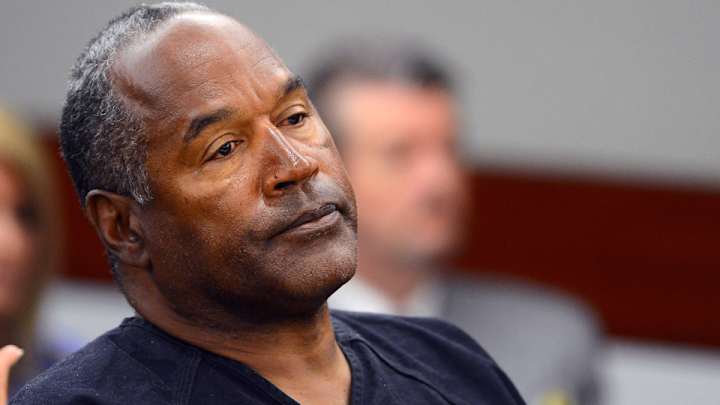O.J. doc concludes with riveting trial sequence and Simpson's downfall

Your teams. Your favorite writers. Wherever you want them. Personalize SI with our new App. Install on iOS or Android.
O.J.: Made in America came to its conclusion this weekend, with Parts 4 and 5 of the documentary taking us deep into O.J. Simpson’s murder trial, the public’s reaction to the trial and Simpson’s later life, including his eventual arrest and imprisonment. (Here are the takeaways from Part 1, Part 2 and Part 3.)
The trial sequences particularly stood out, as did the exploration of Simpson's attempt to return to a normal life in Part 5.
Here are three big takeaways from the last two parts of the documentary.
1. I found myself immensely fascinated with Simpson’s post-trial life. Immediately after, he went right into actor mode, hamming it up for the cameras at his house in the wake of the verdict. Later, he tried to achieve a sense of normalcy by staying in his Brentwood home and playing golf in L.A. Eventually, Simpson was in Miami partying with no shame.
The documentary did a great job of chronicling O.J.’s fall, and the motive behind some of his decisions. But what I wanted to know more about was the fallout for Simpson’s kids. What is it like to be them right now? How do children recover from something like this playing out so publicly?
Analyzing the O.J. Simpson trial before ESPN 30 for 30
If there’s one thing this documentary lacked, it was perhaps truly examining the fallout of Simpson’s actions on those who were actually directly affected, and what it was like to have to go up against someone with the celebrity of Simpson.
In that regard, I liked the inclusion of Fred Goldman, who for better or worse, has made it his life’s mission to take down Simpson. For me, Goldman’s method of grieving is as interesting as anything else in the documentary.
2. Seeing the photos of Nicole Brown-Simpson and Ron Goldman at the crime scene combined with Bill Hodgman’s theory of how the murders were committed, created some chilling television. Between the FX show and this documentary, 2016 has been a renaissance year of sorts for Simpson hysteria. I’m certainly guilty by watching the documentary and consuming all things Simpson as if it were happening right now. But seeing those bloody photos, hearing how Ron Goldman had deep defensive wounds on his hands, looking inside Nicole Brown-Simpson’s neck, it was a sobering reminder of the two lives lost and those emotionally wrecked as the result of a brutal crime.
Inside O.J.: Made In America, ESPN’s best-ever 30 for 30 film
Simpson is a fascinating study because of how a perfect storm of race, money, the justice system and fame ultimately led to his acquittal. But the photos of Brown-Simpson, as well as the equally shocking videos of Latasha Harlins and Rodney King, showed how injustice has long been deeply rooted in our society.
3. Have things changed since 1994? Would a trial like that ever take place today? It’s a struggle to think of someone with enough crossover appeal—sports and entertainment—that properly matches up with Simpson’s popularity.
In that sense, Simpson’s trial was quite literally a once-in-a-lifetime event. We’ve seen our “heroes” do some pretty awful things, and like Simpson, we have seen too many people in the public eye perpetuate domestic violence. But such a grisly murder? That's ultimately the craziest part about O.J. Simpson and everything that’s happened in his life, especially for someone watching it unfold over two decades after the fact.
You can watch over seven hours of footage, with interviews from close friends and people directly involved, intensely studying this one man’s life, and you still can’t totally believe it all happened.
